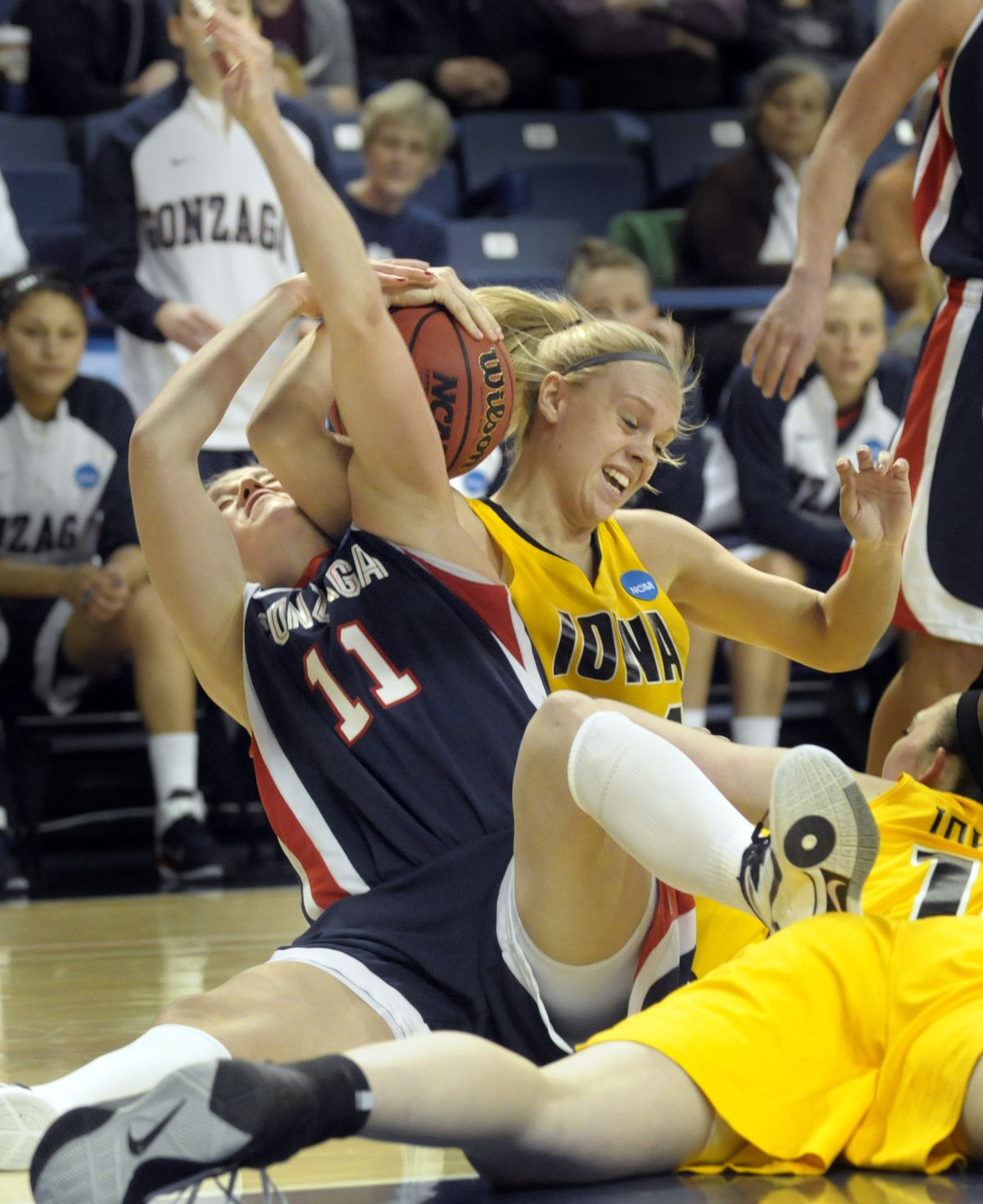Vandersloot, Standish almost leave Zags coach speechless

Kelly Graves insists he is out of words to describe his sensational point guard, Courtney Vandersloot.
The Gonzaga coach came through in the clutch Saturday after Vandersloot scored a career-high 34 points to go with 30 from Kayla Standish to carry Gonzaga to a 92-86 win over visiting Iowa in the first round of the NCAA women’s basketball tournament.
“What else can you say?” Graves asked. “We see this game in and game out and she got to show the rest of the nation today a lot more about Courtney Vandersloot. She kind of showed it all tonight – the tremendous passes, the perimeter game, the driving to the basket, tough shots, and then the composure to hit free throws. Everybody got to see how great Courtney is.”
Now Graves has another star in the show in Standish, a 6-foot-3 junior who hit 15 of 20 shots, including 11 of 12 in the second half as the 11th-seeded Zags rallied from seven points down to defeat the sixth-seeded Hawkeyes.
“Kayla’s one of those players that once she gets it going, she’s difficult to defend because she’s got the perimeter part of her game,” Graves said. “We were running a lot of stuff for her and she’s a rhythm player. Once she got that rhythm going, it helped.
“Quite frankly, she couldn’t score (in the first half) because she was on the bench with fouls, so to have her out there, it goes to show you what a different team we are. It was mainly on her. She was just aggressive.”
Interested observer
The job of trying to contain Vandersloot and Standish next falls to UCLA. Coach Nikki Caldwell was impressed with what she saw from both teams before her team held off Montana 55-47.
“Their go-tos played well,” Caldwell said. “That’s something during this time of year, you’ve got to have your Batman and Robin in sync. When they’re not … you’re going to struggle.”
Energy to spare
The atmosphere in McCarthey Athletic Center was electric, even though pep bands and media knocked the attendance a couple of hundred below the traditional sellout of 6,000.
“Being at home, having our fans here, definitely helped us,” Gonzaga junior Kelly Bowen said. “We’ve been sold out before, but this was 100 times better.”
“It’s a great environment,” Hawkeyes coach Lisa Bluder said. “It’s very tough to communicate and it inspired them. I’d say it probably would have been better on a neutral site.”
Graves thought it helped both teams.
“I think our fans today showed why they’re tremendous fans,” he said. “We didn’t give (the players) a ton of rest in the second half. There was a lot of adrenaline running through those bodies and a lot of that energy came from the fans. I think that great atmosphere helped both teams play well.”
“It got to the point where we were looking at each other and it was like, ‘You better give me a hand signal for that because I for sure can’t hear you,’ Gonzaga senior Claire Raap said. “It was almost too loud to think. It was awesome. It was so cool.”
Looking ahead
The Montana-UCLA game was quite a contrast.
UCLA led 26-17 at halftime before the Bruins heated up to win 55-47.
“(Gonzaga-UCLA) will be a battle of styles,” said Montana coach Robin Selvig, whose team lost to Gonzaga 80-62 on Dec. 5. “They’re totally different. You’ve got get-up-and-down-the-floor, shoot-the-heck- out-of-it Gonzaga and UCLA, which relies on not letting anybody get up and down the floor and shoot the heck out of it.”
A key element, according to the coach who has been at Montana 33 years and has played Gonzaga every season since 1987, will be Vandersloot.
“They’ve got a lot of good players, but Vandersloot is a unique player,” he said. “She makes everyone better. Things rest in her hands.
“I think the fact that UCLA does some zone things – if they get the ball out of her hands, maybe that will help.”
The team that can keep the tempo at its preferred pace has the advantage.
“I know the fans were yelling at us to go fast,” Selvig said. “Well, first of all, I don’t have a lot of go-fast players. Second of all, you go too fast against the way UCLA plays, that’s called a turnover.”
Greg Lee contributed to this report